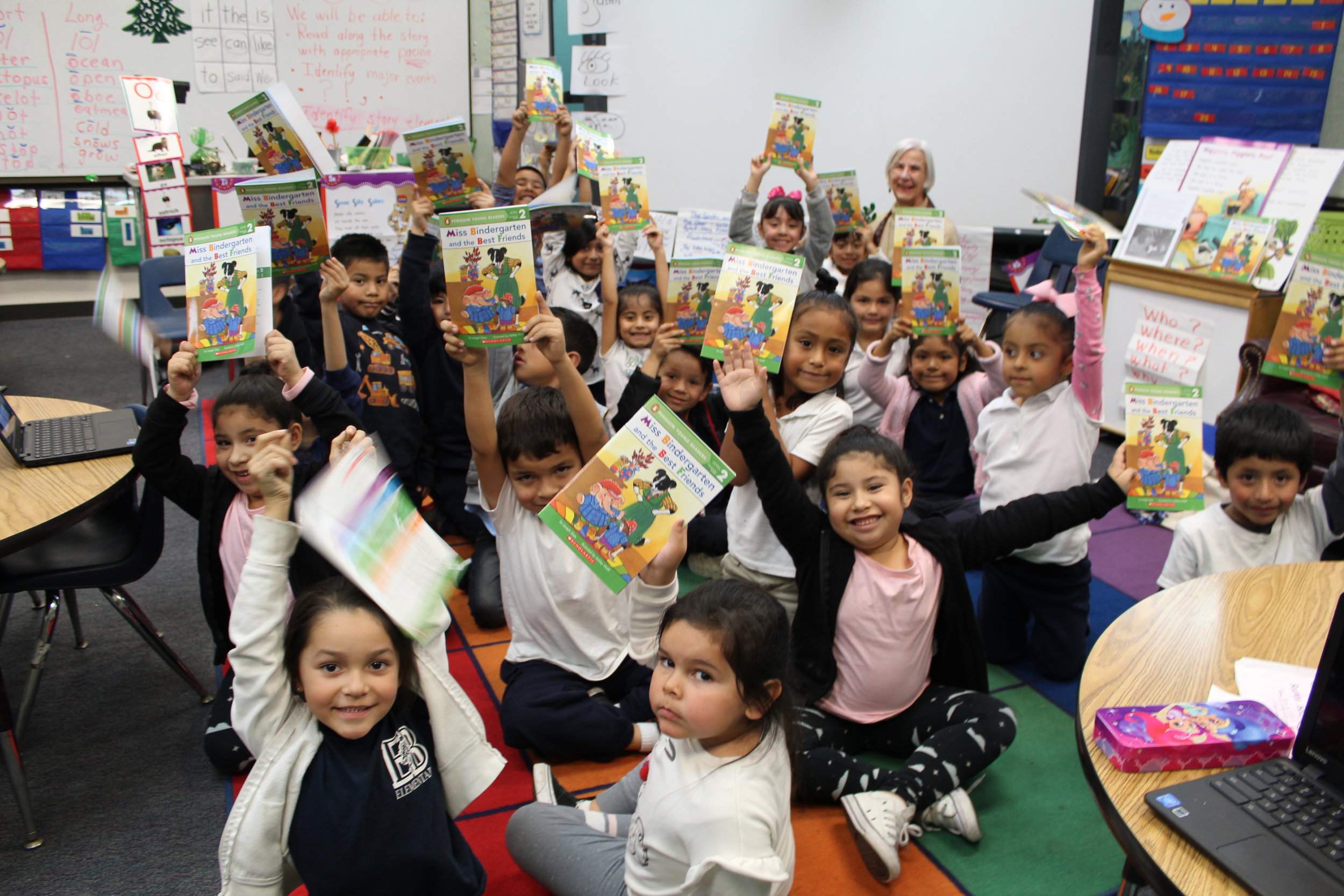By Tait Longhi, Blog Intern & Sara Mortensen, Communications Manager
An image of our Volunteer Appreciation Event. Volunteer Program Manager, Christina Meeker, stands at the podium in front of a screen that says “Volunteer Appreciation Event." Volunteers mingling over lunch also appear in the image.
On Friday April 5th, the community of Words Alive staff, volunteers, donors and supports joined together at the San Diego Public Library to celebrate the many special volunteers that help our organization run so smoothly. As we often say at Words Alive, the volunteers are the lifeblood of our organization.
An image of two of our incredible volunteers, Karen Mailn & Margie Roehm laughing at the camera.
At noon, everyone filed into the event space, where there were smiles and excitement all around. In an effort to connect volunteers with one another, everyone received a “signature card” at check-in with different prompts listed such as, “dislikes chocolate” or “has attended a Words Alive Cookies & Conversation event.” Depending on how many signatures one was able to collect, the more raffle tickets you earned! This signature card was a great way to start conversation with the many volunteers and board members present, and to get to know one another.
Once everyone settled into their seats at around 12:40, the award ceremony honoring our volunteers began. We awarded volunteers in 13 different categories, including: Rookie of the Year, Youth Volunteer of the Year, Leadership Volunteer of the Year, and of course, Volunteer of the Year. Each volunteer who was awarded gave a small but memorable speech all with a common theme, the true reward for them was giving back.
Our Volunteers of the Year were Kim & Doug Harrison. In September, Kim Harrison and her husband, brand specialist Doug Harrison, volunteered to lead the organization in identifying how best to convey its brand – in the simplest terms: what do we do, how do we do it, and what does that look like in the community.
This exercise has resulted in not only a refreshed logo which highlights the action and activity that our engaging programs ignite in students and their families, but language that better describes who we are and what it means for all of us to be touched by Words Alive.
This process has permeated all aspects of the organization – from examinations of our programs, to how we market those programs, how we celebrate and leverage the community partners, to how we look to the future – spreading this impact to every corner of our community and beyond.
An image of Volunteers of the Year, Kim & Doug Harrison, with Leadership Volunteer of the Year, Jeffrey Goldman!
In her speech, Kim said the following:
“For me it’s really about connection, because I think that’s why we’re here, to connect with each other. It’s so incredibly rewarding and every week when I leave it fills my heart because I get the opportunity to connect with these kids and to see their joy. At the end of the day it’s about a feeling the kids have for you, not what you taught them. So if I can connect reading and language and literature with feelings of joy and awe and curiosity, then I feel like there’s nothing better.”
After leaving the event, these feelings of appreciation and joy for the work we all do together lasted. Words Alive is very lucky to have each of its volunteers, and in turn the volunteers feel very lucky to have found Words Alive. As we gear up to enter our 20th year, we look to the impact Words Alive has had since being founded. Over the past 11 years, we have impacted 21,031 students and 1,546 families. We have given away 154,155 books and we have worked with over 1,255 volunteers. It is clear the mark we’ve all made is substantial. So, to anyone who has donated, volunteered or worked with us to better the communities by changing lives through reading and relationships, we thank you. Here’s to many more years to come with all of you by our side!














